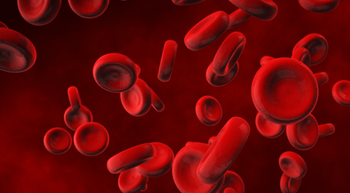
ABOUT Patient Network Aims to Power Outcomes-Based Research
The patient-powered research registry ABOUT aims to increase knowledge about the best prevention, diagnostic, and treatment approaches for those affected directly or indirectly by hereditary cancer risk.
Sue Friedman, DVM
The group Facing Our Risk of Hereditary Cancer Empowered (FORCE) wants oncology nursing professionals to spread the word to patients, survivors, and their families about the benefits of joining ABOUT (American BRCA Outcomes & Utilization of Testing), a patient-powered network that’s collecting real-world information from the real-world experiences of people affected directly or indirectly by hereditary cancer risk. And, armed with this information, FORCE and its partners aim to increase knowledge about the best prevention, diagnostic, and treatment approaches for this population.
Oncology Nursing News recently sat down with the group’s executive director, Sue Friedman, DVM, during its annual conference in Philadelphia to learn more about the network:
“ABOUT is really the first research registry that is created and governed by and for the hereditary breast and ovarian cancer (HBOC) community,” explained Friedman. “Patients really get input into the direction of the research … they help us to define the research questions we need answers to, so that we can ultimately improve patient outcomes.”
She explained that many people receive little or conflicting information about medical options associated with HBOC and struggle with the decision. They may feel they have to do their own research on their medical options, none of which are ideal, but they still have to choose.
There are quite a few examples of areas where there are no guidelines, noted Friedman, for example, when is it appropriate for a high-risk woman to prophylactically remove her uterus when she is having surgery to remove her ovaries and fallopian tubes? This decision is currently guided largely by physician recommendation, according to research FORCE conducts through its patient engagement surveys. Friedman said she and her colleagues find this, “really fascinating, because there are no guidelines there.”
Another gap in the research that FORCE has identified is how women make decisions on whether to use hormone replacement therapy following ovary removal and, for those who do, why some women stop.
Through ABOUT, Friedman stressed, “we hope to inform patient decision making based on outcomes.”
ABOUT is open to anyone who has a family history or personal history that is consistent with hereditary breast, ovarian, and related cancers. That includes pancreatic cancer, prostate cancer, and melanoma—and it’s for people who have had genetic testing and people who haven’t, said Friedman.
“If they have a family history, if they have a family member who’s had genetic testing, if there’s a known mutation in the family, whether or not they’ve had testing, they can join the network. It’s open to men and women, cancer survivors and “previvors” (high-risk individuals with a known mutation or family history).
The network has enrolled more than 5800 people into its research registry, with an overall target of 12,000. Patients can join online through
ABOUT is sponsored by the National Cancer Institute and the Patient-Centered Outcomes Research Institute.
Newsletter
Knowledge is power. Don’t miss the most recent breakthroughs in cancer care.






























































































